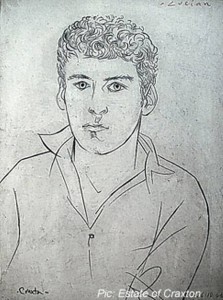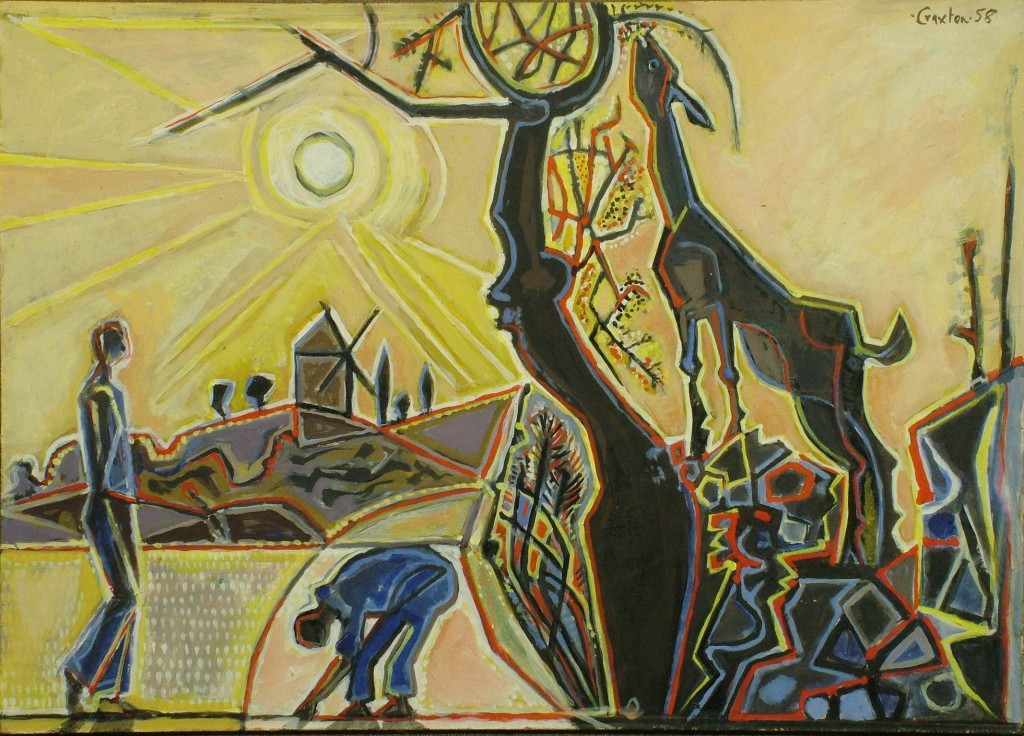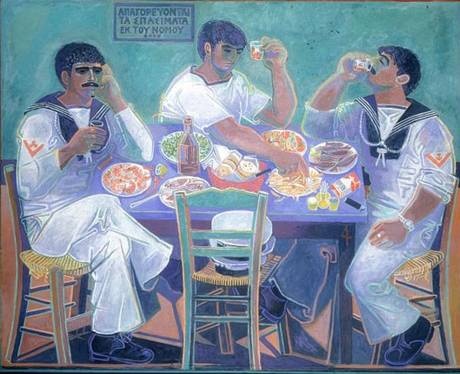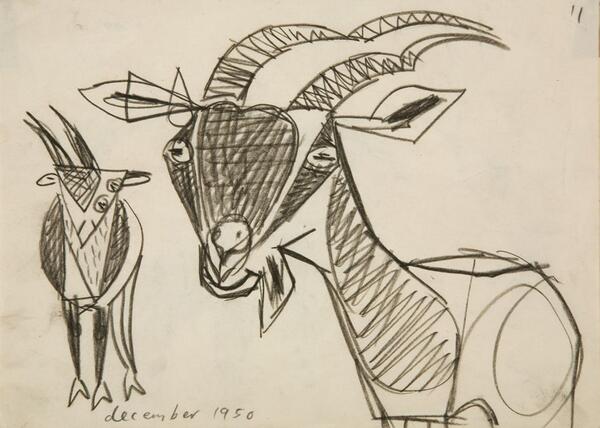John Craxton. The name many have little significance to the British public, but his recent exhibition at the Fitzwilliam in Cambridge (which closed at the end of last month) served to change the fact. And with just cause. The British-born, Mediterranean-bred artist, produced some of the most vibrant and beautiful work I have encountered in a while. Despite the small scale of the exhibition, it demonstrated the evolution and diversity of Craxton’s work, from delicate line drawings, to geometric landscapes.
Inspiration from artists like William Blake, Picasso and Samuel Palmer is clear throughout his oeuvre. His friendship and teaching from Graham Sutherland and Lucian Freud also found its way into the young man’s work. He was also appreciated as a good companion as well as an artist and the variety of his art testifies to his colourful character.
It was Craxton’s first visit to Greece in 1946 that inspired him with light, food, landscape and nature. His work shed the slight gloom of his youth and took on the romanticism of the Mediterranean, where he spent the majority of his adult life. He demonstrated a unique ability to capture the easy pace of these sunny regions and the unique characters he encountered there. Many of his larger scale works are of pastoral scenes and the use of block colours, effective layering and intentional compositions work in harmony to give an impression of an exotic culture – one that any traveller to Greece or Sicily will be familiar with. There is no doubt that his landscapes are seeking to create arcadia with their serene shepherds, chromatic light and whimsical goats.
However, the most interesting aspect of Craxton’s work did not occur to me until after I had stood enjoying Landscape with the Elements, a monumental kaleidoscopic work. Craxton was producing works such as these in the aftermath of the Second World War, wanting to project a joyful, energetic picture of life – life in Europe that was continuing despite the years of loss they had suffered. To this end, he painted images of thriving landscapes, flourishing feasts and animated locals. Because he chose to remain in Greece for the remainder of his life, his work was not celebrated by the British art world for many years. Thankfully, it is now possible to view Craxton in the context of history and see him as a joyous contrast to the horrors occurring during his lifetime.
His paintings have a personal sensitivity to them and also capture the fullness of a life lived. He will amaze you with his talent, complexity, simplicity and emotional narrative. And his goats really are humorous too.







